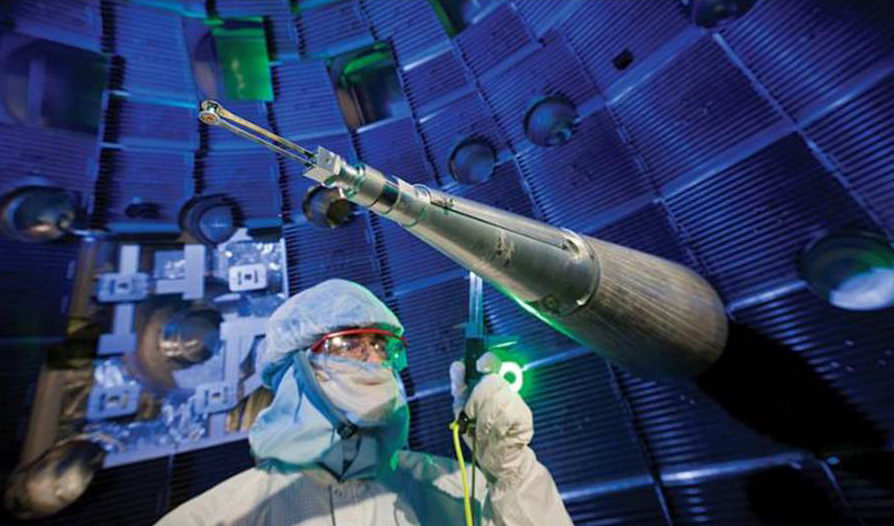
In ICF, conditions of extremely high temperature and density are achieved by imploding a spherical capsule containing fusion fuel. This implosion is driven by laser radiation or soft x-rays. In ICF we start off with a spherical shell that is a couple of millimeters in diameter, and make it implode upon itself until it is only a hundred microns or so across. The mechanism by which this is achieved is rather like the process that propels rockets into space. The outside of the capsule is made to expand rapidly outwards – much like a rocket exhaust. By Newton’s third law, which states that “for each action there is an equal and opposite reaction”, the rest of the capsule implodes inwards. The expansion of the capsule surface is caused by intense heating with direct laser radiation or x-rays produced in a surrounding structure known as a ‘hohlraum’ or black-body cavity which is irradiated by lasers.
The fuel comprising the deuterium and tritium isotopes of hydrogen is compressed to densities around 1000 times the original fuel solid density, and its temperature is raised to around 30,000,000 Celsius. In these conditions fusion occurs with typically deuterium and tritium nuclei combining to form fast moving helium nuclei and neutrons. The fuel gets even hotter as the kinetic energy of the helium nuclei produced by the fusion reactions is absorbed in the parts of the fuel that have not undergone fusion. In a few tens of trillionths of a second the fuel self heats to over a billion Celsius, releasing as much energy as is stored in a stick of dynamite. The kinetic energy of the neutrons can be captured in the reactor vessel and converted into electricity.
The National Ignition Facility in the US was built to demonstrate the inertial approach to energy generation and has produced significant heating of the fuel by helium nuclei. The National Ignition Facility only aims to demonstrate the process of energy release – it will not be a power station since there is currently no way to harness the neutron energy released when the fuel is burnt. Also the laser which drives the implosion process can only be fired once every few hours. This is not nearly often enough to release the quantities of energy required to make a useful electrical generator. Commercial electricity generation will require a laser that fires at a high repetition rate of ten times a second or more. If the laser and other technological challenges can be met, commercial electricity generation by ICF may be possible by the middle of the 21st century.
A novel approach which seeks to accelerate the delivery of inertial fusion power to the grid is “projectile fusion”, which is being developed by the private fusion company First Light Fusion.